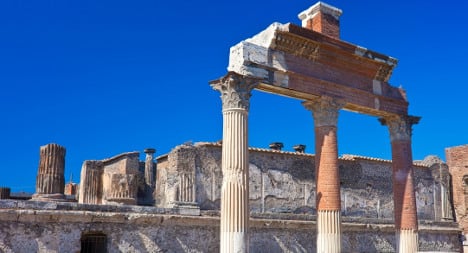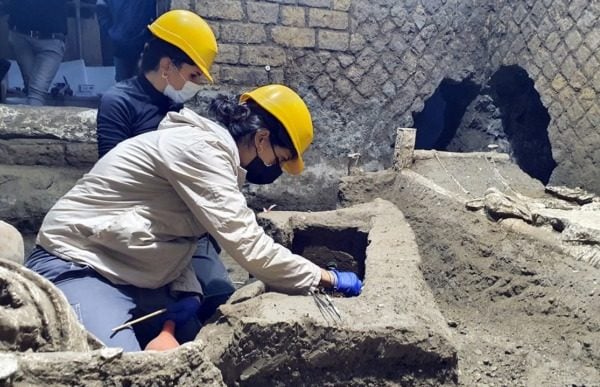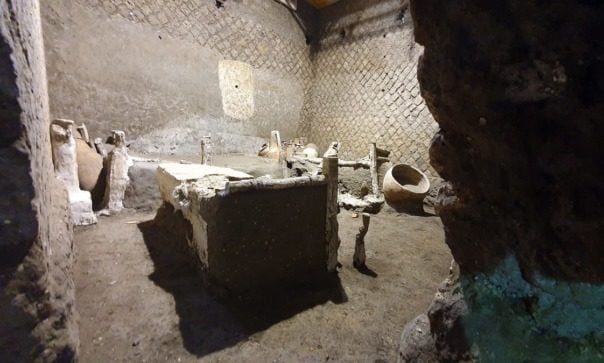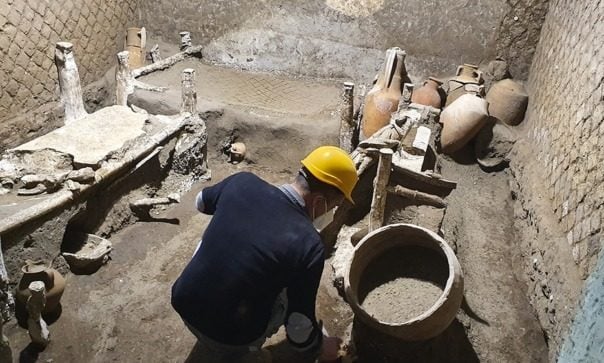A custodian doing rounds last week discovered "the removal of a part of a fresco in the House of Neptune," where a depiction of the goddess Artemis had been "chiseled off with a metallic object," the Roman site's curator department said in a statement on Tuesday.
Police have launched an investigation into the theft of the 20 centimetre (eight-inch) wide fragment, which occurred in an area closed to the public, leaving a glaring white slash in the pink-toned fresco, where a second Greek character now stands forlornly alone.
The discovery sparked outrage in Italy, with Il Messaggero describing it as "a shame for the country", made doubly embarrassing by the recent appointment of a new "super-superintendent" for the site.
In January, police were also shocked to find a relic from the site up for sale on eBay.
READ MORE HERE: Shock after Pompeii relic put up for sale on eBay
The theft comes on the back of a of collapses in the long-neglected ruins near Naples, which have drawn international concern.
The Temple of Venus and walls of a tomb were damaged earlier this month after heavy rains, prompting the European Union to urge Italy to "take care of Pompeii, because it is emblematic not only for Europe but also for the world."
In response, Italy said it would unblock some €2 million to help oil the wheels of a major EU-backed project to restore the site.
But Italy's notorious bureaucracy is hampering the flow of funds to the site.
READ MORE HERE: Is red tape threatening Italy's prized ruins?
Prime Minister Matteo Renzi also appealed to private investors to help restore the ruins.
Last year, conservation workers began a €105 million makeover of Pompeii, funded by the EU to the tune of €41.8 million.
But according to the Corriere della Sera daily, only €588,000 have been spent so far – just 0.56 percent of the funds.
The project is seen as crucial to the survival of the 44-hectare site in the shadow of Mount Vesuvius, the volcano that destroyed the city of Pompeii in 79 AD.
Don't miss a story about Italy – Join us on Facebook and Twitter.






 Please whitelist us to continue reading.
Please whitelist us to continue reading.
Member comments